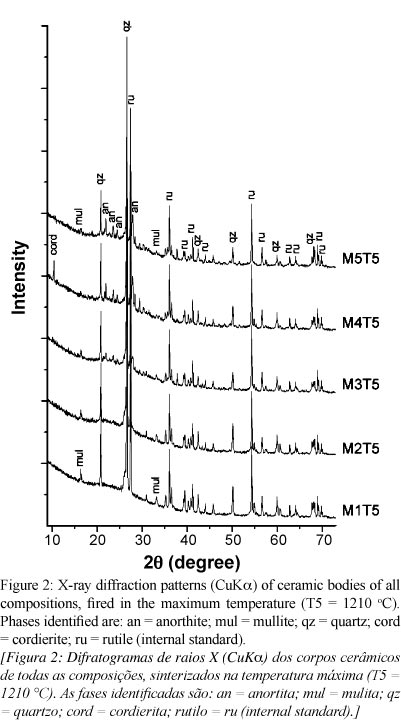White ceramics were produced with raw mixtures prepared with varying proportions of diopside-rich rock (0 to 20 wt.%) and potassic feldspar (40 to 20 wt.%), and fixed proportions of kaolinite (40 wt.%) and quartz (20 wt.%), fired in a temperature range from 1170 to 1210 ºC. The phases identified in the experimental ceramics were quartz, anorthite, mullite and glass, and their relative mass proportions were determined by X-ray diffraction (Rietveld method). The addition of diopside as a partial substitute for potassic feldspar causes the formation of a calcium silicate, analogous of the natural anorthite (CaSi2Al2O8) in the ceramics, with proportional reduction in its glass and mullite contents. Water absorption and porosity of the ceramic bodies clearly decrease with increasing firing temperature, while the effect of the raw mixture composition on the physical and mechanical properties of the ceramics is less evident. Diopside-rich rock has low iron content (1.5 wt.% Fe2O3) and, therefore, promotes white burning.
diopside; feldspar; ceramic; X-ray diffraction; Rietveld method





